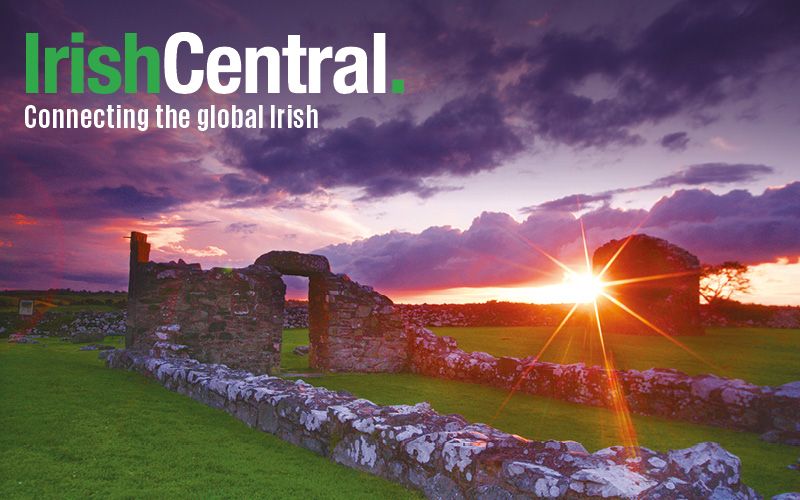St. Joseph's Orphanage and Industrial School, the institution once run by the Poor Clare Sisters in Cavan town, has largely been forgotten now but it outraged the whole of Ireland over 70 years ago after a terrible fire broke out in the basement laundry in the early hours of a February morning in 1943.
Since the convent and orphanage was situated on the main street of Cavan town, the fire – reportedly caused by an electrical fault - was quickly noticed, bringing horrified locals out to help in any way they could.
But they discovered that every door was locked and they could not gain access.
In the inquiry that followed it was alleged that the nuns had not evacuated the children because they did not want them to be seen on the public street in their night clothes.
Incredibly, when alerted to the gathering smoke by a orphan girl, a senior nun made the decision not to evacuate the children, instead she directed them to the top floor dormitory and closed the doors.
Being an enclosed order, the nuns were reportedly reluctant to leave the building themselves, which they considered would be a violation of their vows.
Some locals claimed that the girls, who were all either orphans or illegitimate children, were outcasts in Irish society and so the nuns were reluctant to see them stared at on the public street.
By the time help was finally admitted to the building it was almost too late to assist the screaming children, who were pitifully trapped on the top floor dormitory.
The report found that when the rescuers finally gained admission to the building they didn't know where to look, due to lack of familiarity with its structure. Critical minutes were lost due to this. The inquiry found that if the nuns had brought the children downstairs in the first fifteen minutes they would have survived.
But forty minutes later the entire building was gutted, the roof was falling in and the building was turning into a smoking ruin.
Thirty five children and one elderly lay woman burned to death. The nuns survived.
The inquiry found that there had been sufficient time to save all of the children, had a plan of escape been enacted. The terrible loss of life was due to panic, lack of fire-fighting training, the nuns insistence that rescuers try to put out the fire rather than evacuate the children, and an ill-prepared and under resourced local fire-fighting service, the report said.
But many local people called the report a whitewash, insisting that more girls would have been saved if the nuns hadn’t worried about themselves or the girls being seen outside the convent in their nightclothes.
The view that the report was a whitewash was shared by the secretary to the Inquiry Brian O'Nolan, who is better known as the author Flann O'Brien and by one of the counsel representing the Electricity Supply Board (ESB) Tom O'Higgins. The pair co-wrote a verse to convey their anger.
“In Cavan there was a great fire,
Judge McCarthy was sent to inquire,
It would be a shame, if the nuns were to blame,
So it had to be caused by a wire.”
Cavan man Matt McKiernan told Ireland's national broadcaster RTE recently that he still feels the pain of the loss of his two sisters who died in the 1943 fire.
McKiernan explained that the two girls had been placed in the Industrial school after the death of their mother because the local priest felt it was inappropriate for two young girls to be looked after by a protestant neighbor or by their own father.
The girls had been at St. Joseph's just six months when the fire broke out.
Almost four decades later the book Children of the Poor Clares (by Mavis Arnold and Heather Laskey) finally exposed the horrors endured by children placed in church care within Ireland’s industrial school system.
According to the authors a terrifying regime of physical and emotional abuse, malnourishment, humiliation and neglect that frequently scarred the children who had endured these schools and orphanages for life.
The Irish state itself was also indicted in Arnold and Laskey's book for colluding without protest in what they called the deliberate and mass incarceration of its poorest and most vulnerable citizens.
In Cavan town to this day there is still no permanent memorial to the thirty five children and one lay woman who died.
List of the children who died:
Mary Harrison (15 years, Dublin )
Mary Hughes (15 years, Killeshandra)
Ellen McHugh (15 years, Blacklion)
Kathleen and Frances Kiely (12 years and 9 years, Virginia)
Mary and Margaret Lynch (15 years and 10 years, Cavan)
Josephine and Mona Cassidy (15 years and 11 years, Belfast)
Kathleen Reilly (14 years, Butlersbridge)
Mary and Josphine Carroll (12 years and 10 years, Castlerahan)
Mary and Susan McKiernan (16 years and 14 years, Dromard)
Rose Wright (11 years, Ballyjamesduff)
Mary and Nora Barrett (12 years, twins, Dublin)
Mary Kelly (10 years, Ballinagh)
Mary Brady (7 years, Ballinagh)
Dorothy Daly (7 years, Cootehill)
Mary Ivers (12 years, Kilcoole Wicklow )
Philomena Regan (9 years, Dublin)
Harriet and Ellen Payne (11 years and 8 years, Dublin)
Teresa White (6 years, Dublin)
Mary Roche (6 years, Dublin)
Ellen Morgan (10 years, Virginia)
Elizabeth Heaphy (4 years, Swords)
Mary O'Hara (7 years, Kilnaleck)
Bernadette Serridge (5 years, Dublin)
Katherine and Margaret Chambers (9 and 7 years, Enniskillen)
Mary Lowry (17 year,s Drumcrow, Cavan)
Bridget and Mary Galligan (17 and 18 years, Drumcassidy, Cavan)
Mary Smith (80 years, employed as a Cook)




Comments